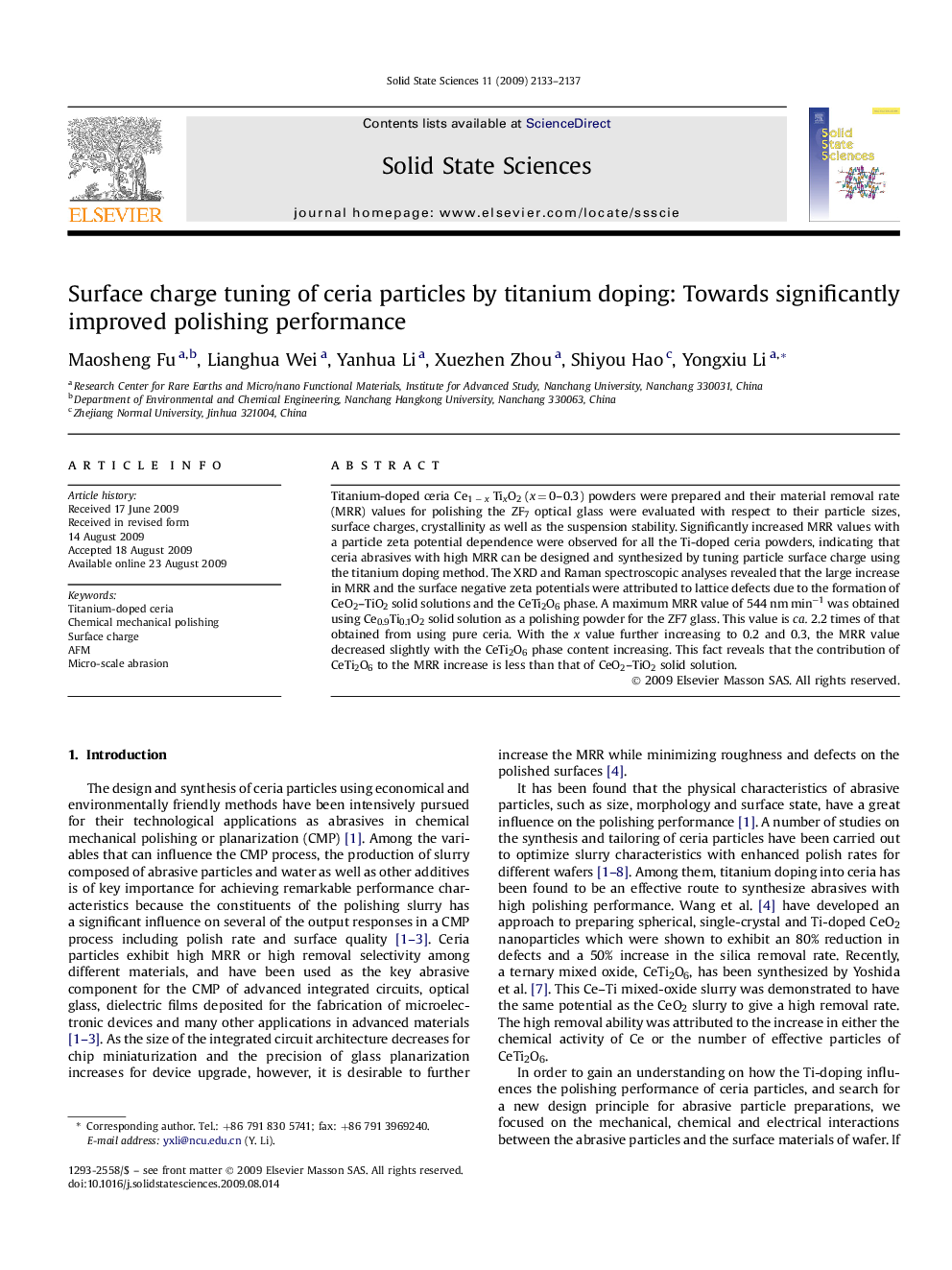| Article ID | Journal | Published Year | Pages | File Type |
|---|---|---|---|---|
| 1505683 | Solid State Sciences | 2009 | 5 Pages |
Titanium-doped ceria Ce1 − x TixO2 (x = 0–0.3) powders were prepared and their material removal rate (MRR) values for polishing the ZF7 optical glass were evaluated with respect to their particle sizes, surface charges, crystallinity as well as the suspension stability. Significantly increased MRR values with a particle zeta potential dependence were observed for all the Ti-doped ceria powders, indicating that ceria abrasives with high MRR can be designed and synthesized by tuning particle surface charge using the titanium doping method. The XRD and Raman spectroscopic analyses revealed that the large increase in MRR and the surface negative zeta potentials were attributed to lattice defects due to the formation of CeO2–TiO2 solid solutions and the CeTi2O6 phase. A maximum MRR value of 544 nm min−1 was obtained using Ce0.9Ti0.1O2 solid solution as a polishing powder for the ZF7 glass. This value is ca. 2.2 times of that obtained from using pure ceria. With the x value further increasing to 0.2 and 0.3, the MRR value decreased slightly with the CeTi2O6 phase content increasing. This fact reveals that the contribution of CeTi2O6 to the MRR increase is less than that of CeO2–TiO2 solid solution.
Graphical abstractFigure optionsDownload full-size imageDownload as PowerPoint slide
